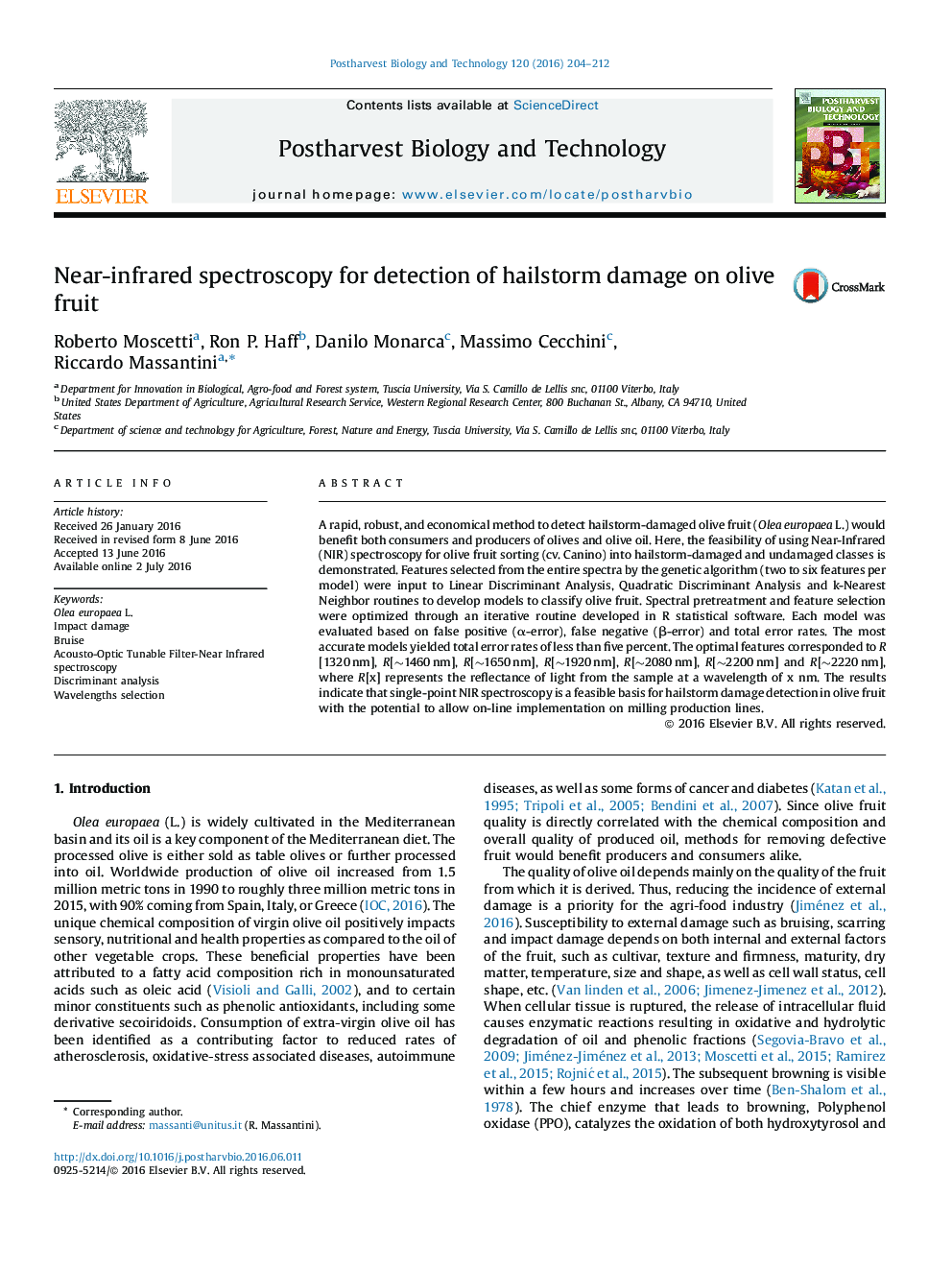| Article ID | Journal | Published Year | Pages | File Type |
|---|---|---|---|---|
| 4517743 | Postharvest Biology and Technology | 2016 | 9 Pages |
•NIR spectroscopy is feasible for hailstorm damage detection on olive fruit.•LDA and QDA allow reliable detection of hailstorm bruises.•1400–1550 nm and 1900–2300 nm spectral bands are the most performing wavelengths.•This approach provides the basis for a rapid on/in/at-line detection system.•NIR based method yielded an accuracy of around 96%.
A rapid, robust, and economical method to detect hailstorm-damaged olive fruit (Olea europaea L.) would benefit both consumers and producers of olives and olive oil. Here, the feasibility of using Near-Infrared (NIR) spectroscopy for olive fruit sorting (cv. Canino) into hailstorm-damaged and undamaged classes is demonstrated. Features selected from the entire spectra by the genetic algorithm (two to six features per model) were input to Linear Discriminant Analysis, Quadratic Discriminant Analysis and k-Nearest Neighbor routines to develop models to classify olive fruit. Spectral pretreatment and feature selection were optimized through an iterative routine developed in R statistical software. Each model was evaluated based on false positive (α-error), false negative (β-error) and total error rates. The most accurate models yielded total error rates of less than five percent. The optimal features corresponded to R[1320 nm], R[∼1460 nm], R[∼1650 nm], R[∼1920 nm], R[∼2080 nm], R[∼2200 nm] and R[∼2220 nm], where R[x] represents the reflectance of light from the sample at a wavelength of x nm. The results indicate that single-point NIR spectroscopy is a feasible basis for hailstorm damage detection in olive fruit with the potential to allow on-line implementation on milling production lines.
